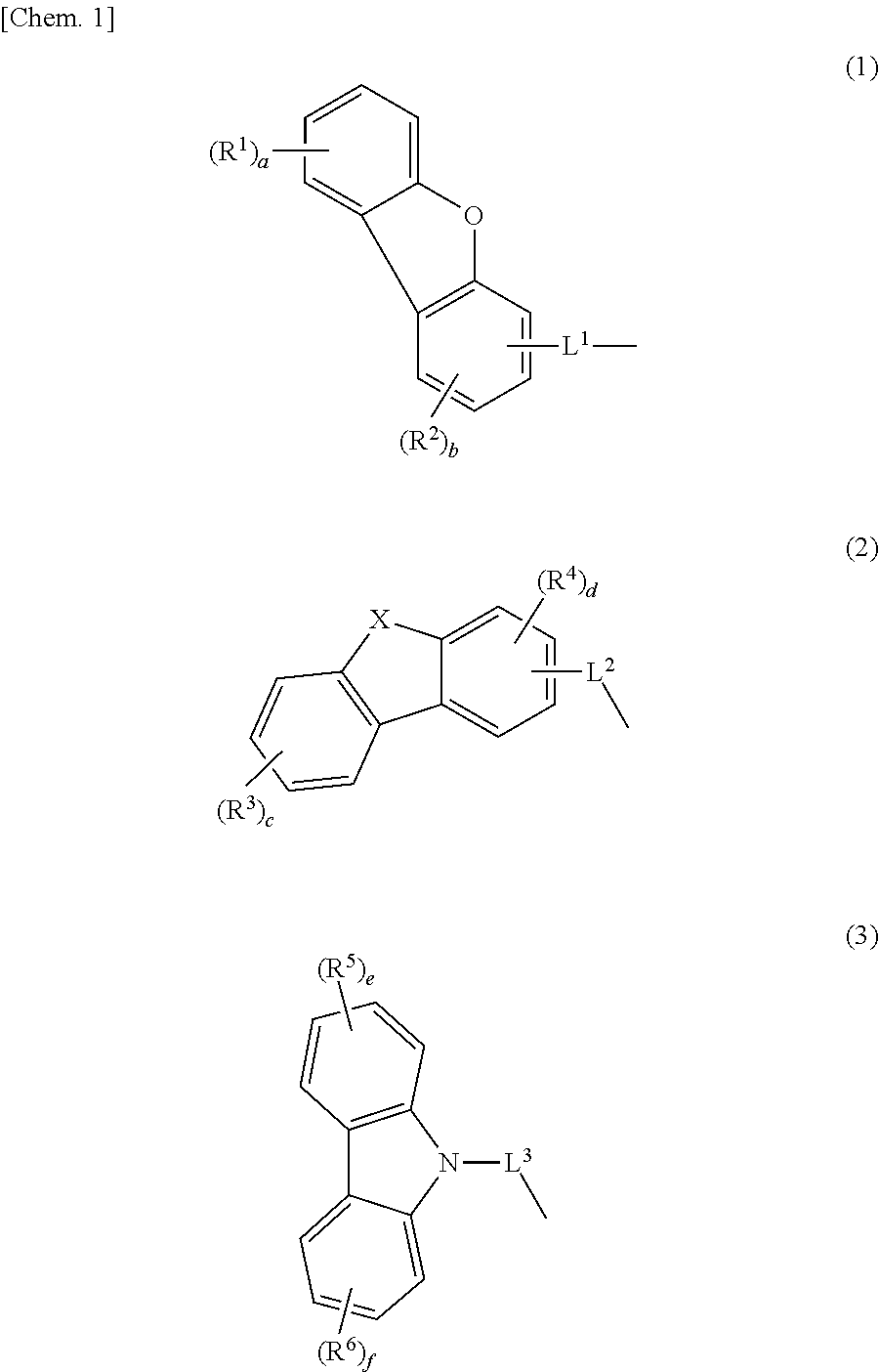Aromatic amine derivative, and organic electroluminescent element
an organic electroluminescent element and amine derivative technology, applied in the direction of luminescent compositions, organic chemistry, chemistry apparatus and processes, etc., can solve the problems of increasing driving voltage, reducing emission efficiency, and changing luminescent color, and achieve long life and high efficiency
- Summary
- Abstract
- Description
- Claims
- Application Information
AI Technical Summary
Benefits of technology
Problems solved by technology
Method used
Image
Examples
synthesis example 1-1
Synthesis of Intermediate 1-1)
[0308]In a stream of argon, to a 1,000-mL three-necked flask, 47 g of 4-bromobiphenyl, 23 g of iodine, 9.4 g of periodic acid dihydrate, 42 mL of water, 360 mL of acetic acid, and 11 mL of sulfuric acid were charged, and the mixture was stirred at 65° C. for 30 minutes and was then subjected to a reaction at 90° C. for 6 hours. The reactant was poured into ice water, followed by filtering. The resultant was washed with water, and then washed with methanol, whereby 67 g of a white powder were obtained. Main peaks having ratios m / z of 358 and 360 were obtained with respect to C12H8BrI=359 by a field desorption mass spectrometry (hereinafter, FD-MS) analysis, so the powder was identified as Intermediate 1-1.
synthesis example 1-2
Synthesis of Intermediate 1-2)
[0309]A reaction was performed in the same manner as in Synthesis Example 1-1 except that 2-bromo-9,9-dimethylfluorene was used instead of 4-bromobiphenyl. As a result, 61 g of a white powder were obtained. The powder was identified as Intermediate 1-2 by FD-MS analysis because main peaks having ratios m / z of 398 and 400 were obtained with respect to C15H12BrI=399.
synthesis example 1-3
Synthesis of Intermediate 1-3
[0310]150 grams (892 mmol) of dibenzofuran and 1 L of acetic acid were loaded into a flask. The air in the flask was replaced with nitrogen, and then the contents were dissolved under heat. 188 grams (1.18 mol) of bromine were dropped to the solution while the flask was sometimes cooled with water. After that, the mixture was stirred for 20 hours under air cooling. The precipitated crystal was separated by filtration, and was then sequentially washed with acetic acid and water. The washed crystal was dried under reduced pressure. The resultant crystal was purified by distillation under reduced pressure, and was then repeatedly recrystallized with methanol several times. Thus, 66.8 g of 2-bromodibenzofuran were obtained (in 31% yield). The resultant was identified as Intermediate 1-3 by FD-MS analysis.
PUM
| Property | Measurement | Unit |
|---|---|---|
| Efficiency | aaaaa | aaaaa |
| Transport properties | aaaaa | aaaaa |
Abstract
Description
Claims
Application Information
 Login to View More
Login to View More - R&D
- Intellectual Property
- Life Sciences
- Materials
- Tech Scout
- Unparalleled Data Quality
- Higher Quality Content
- 60% Fewer Hallucinations
Browse by: Latest US Patents, China's latest patents, Technical Efficacy Thesaurus, Application Domain, Technology Topic, Popular Technical Reports.
© 2025 PatSnap. All rights reserved.Legal|Privacy policy|Modern Slavery Act Transparency Statement|Sitemap|About US| Contact US: help@patsnap.com



